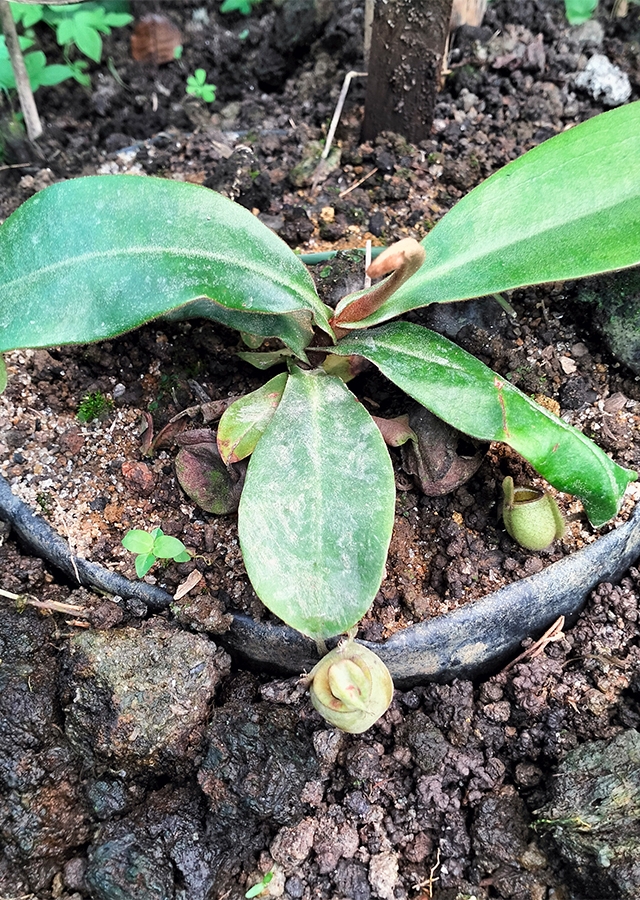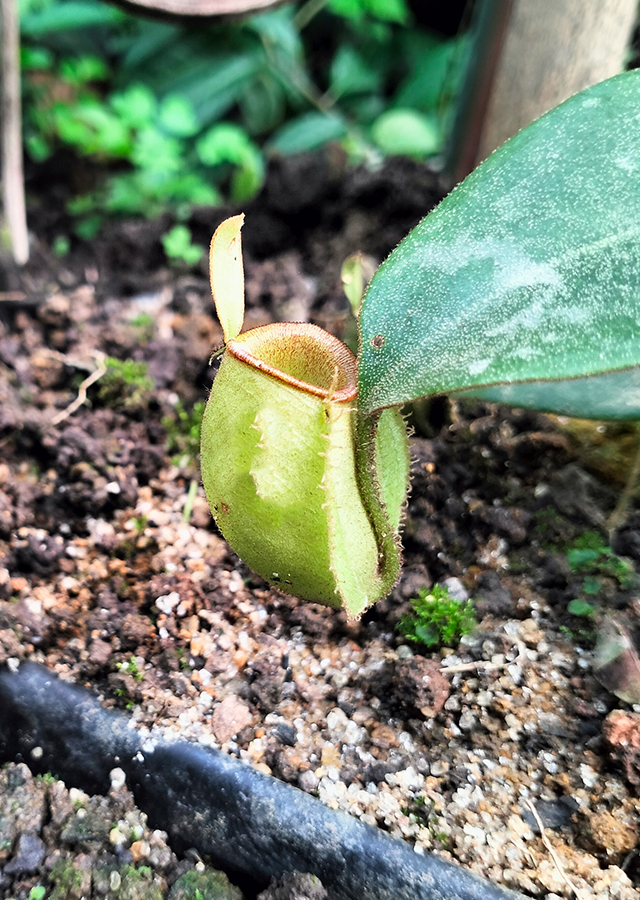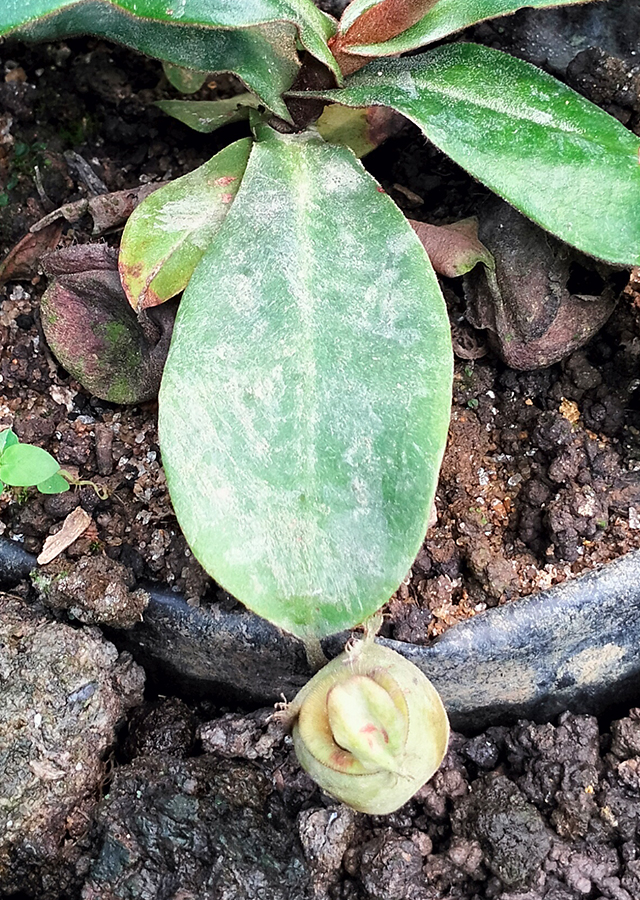Traditional Herbs from Nepenthes ampullaria
treat_stomach_ache
- Take enough thermos semar bag roots, wash until clean.
- Boil then grind until it becomes a paste.
- Pulse on the stomach.
reduce_fever
- Take enough thermos semar bag stems, wash enough until clean.
- Boil until boiling.
- Let it warm/cool.
- Strain then drink.
What is Nepenthes ampullaria Looks like??



Parts of Nepenthes ampullaria that could be used
- Root
- Stem
Nepenthes ampullaria Distribution
Nepenthes ampullaria is a pitcher plant which has a flask-shaped bag. This species is very typical of the genus Nepenthes, can be found in Borneo, Sumatra, Thailand, Peninsular Malaysia, Singapore, the Maluku Islands and New Guinea. Nepenthes ampullaria is also known as the only "vegetarian" species of pitcher plant, because the pitcher plant does not have nectar glands on the lip of the pitcher so insects rarely get trapped in the pitcher. This pitcher plant is cultivated for trade, as an ornamental plant on the global market, so the species continues to exist. Nepenthes ampullaria is one of the Nepenthes species most commonly used in traditional medicine.Agroecology of Nepenthes ampullaria
Nepenthes ampullaria grows in secondary forests or swamps, and wet open places, from lowlands to an altitude of about 2,100 m. Prefers bright indirect sunlight. Prefers moist, acidic media lacking in nutrients such as peat, sphagnum moss or salt-free cocopeat. Avoid fertilizing, especially with quick-release fertilizers, which can burn or kill the plant, or result in excessive leaf growth without pitcher formation.
Morphology of Nepenthes ampullaria
- The slender stem has many short branches with rosettes of leaves at intervals on the lower part of the stem, but on the higher parts, the branches are fewer and more leaves are borne.
- Single leaf, spathulate leaf shape, smooth surface, rough underside and hairy, leaf tips pointed, leaf stalks present, length < 2 cm. Long tendrils < 15 cm, bag height < 7 cm, bag width < 5 cm, green-green with purplish red spots. The peristome is bent and wide, green. The sac covers form an angle > 180\u02da, lanceolate-shaped. Spur length < 10 mm, not branched. and measuring 2\u20135 by 0.5 cm. At the tip of the rosette leaves there is an urn-shaped to egg-shaped pouch, 2-10 cm long which has a narrow lip. The sacs are also green to almost white, with pink or red spots or patches for the leaves at the top of the stem, the leaf blades are narrow and long, about 25 by 6 cm, with elongated tips forming slender, coiled tendrils. Pockets almost never form here, but if they do, they are small, funnel-shaped and not as well developed as pockets on rosette leaves. These upper pitchers are rarely developed and rarely observed, and are thought to be vestigial structures formed as a result of the plant being stressed by very poor soil.
- The 1.3 cm wide green flowers grow on shoots up to 45 cm long. Small, yellow, without petals, clustered in erect raceme inflorescences up to 45 cm long. The plant is dioecious, with male and female flowers found on separate plants. Blooms occur once or twice per year, lasting for several weeks, pollinated by nocturnal insects. When the blooming period coincides with that of other Nepenthes species nearby, hybridization can occur. Natural hybrids in Singapore include: Nepenthes \u00d7 trichocarpa (= N. ampullaria \u00d7 N. gracilis) and Nepenthes \u00d7 hookeriana (= N. ampullaria \u00d7 N. rafflesiana).
- The 2.5 cm long fruit is a capsule that ripens from green to brown, splitting when ripe into four parts to release seeds.
- Small, thread-like seeds are scattered wind.
Cultivation of Nepenthes ampullaria
Propagation by seeds (variable progenies) or stem cuttings. If taking tip cuttings, use 4-node cuttings (tip plus 3 bottom leaves) to prevent rotting of the tender shoot tip before planting. Single cuttings from the bottom of the plant are also possible. The underground fused basal rosettes can be divided and potted separately.
Nepenthes ampullaria, more details :
Chemical Content of Nepenthes ampullariaGylcosides and phenols.
Benefits of Nepenthes ampullaria
Regulates the menstrual cycle, facilitates child birth, relieves asthma, treats eye inflammation and acts as a stamina enhancer, treats malatia, relieves fever, stomach ache and dysentery.
Simplisia of Nepenthes ampullaria
Another Facts for Nepenthes ampullaria :
Synonym of Nepenthes ampullariaNepenthes ampullacea Jack, Nepenthes ampullaria var. racemosa J.H.Adam & Wilcock, Nepenthes vittata Beck
Habitus of Nepenthes ampullaria
Herb. Climbing semi-woody herb, stem length reaches 15 m
Habitat of Nepenthes ampullaria
- Wetland
- Forest
No comments:
Post a Comment